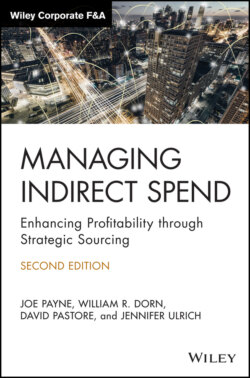Читать книгу Managing Indirect Spend - Joseph Payne, Joe Payne - Страница 36
Defining Roles and Responsibilities
ОглавлениеThe last component to focus on when engaging end users is defining roles and responsibilities. Providing a consistent message to the supply base (both incumbents and alternate suppliers) is critical to ensuring a positive end result. A supplier who hears different things from different members of your team may either disengage from the process or provide a proposal that factors in uncertainty. For this reason, it is essential to assign a project lead. This person (who may be an end user) should be the primary point person that suppliers go to when asking questions, requesting clarification, or providing input. This primary point of contact is also responsible for collecting information and providing your requirements to suppliers throughout a sourcing engagement.
This arrangement does not imply that the rest of the team should be disengaged from the process. By all means, the team should work together to develop the strategy, build requirements, identify alternates, create documents, review proposals, and develop responses to supplier questions. But to ensure consistent messaging, all that information should be provided to the supplier base through a primary point person.
As you move to later phases in the initiative (such as finalist presentations, negotiations, award, and implementation), more members of the team become engaged, at which point it makes sense to have members of your team work directly with members of the supplier's team. But as a starting point, designating a primary point person to provide your requirements to the supplier community helps to avoid a large amount of confusion and miscommunication.
